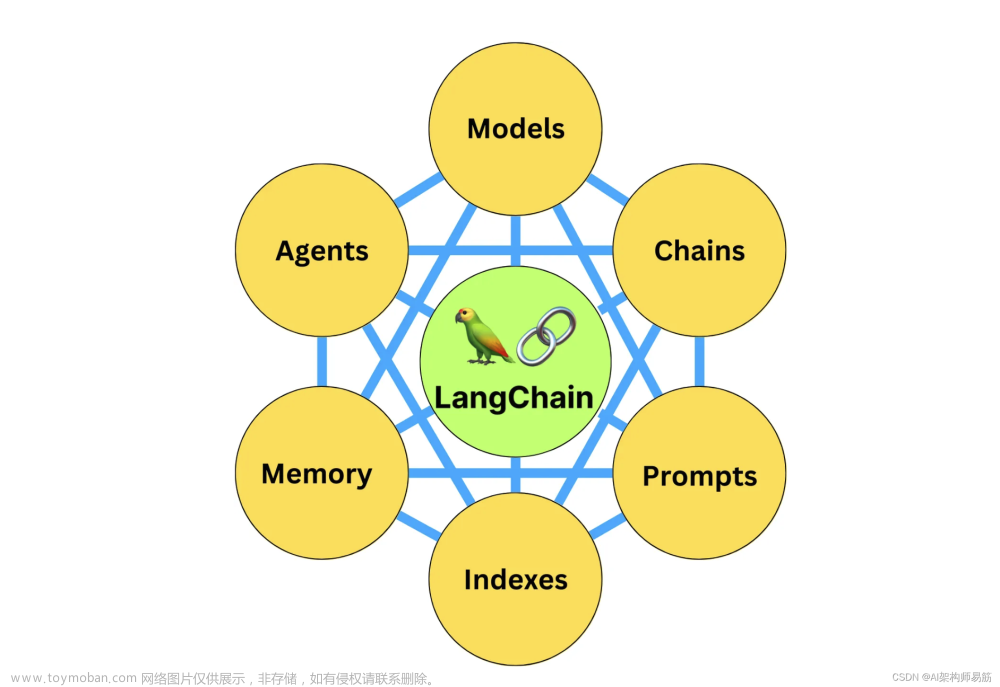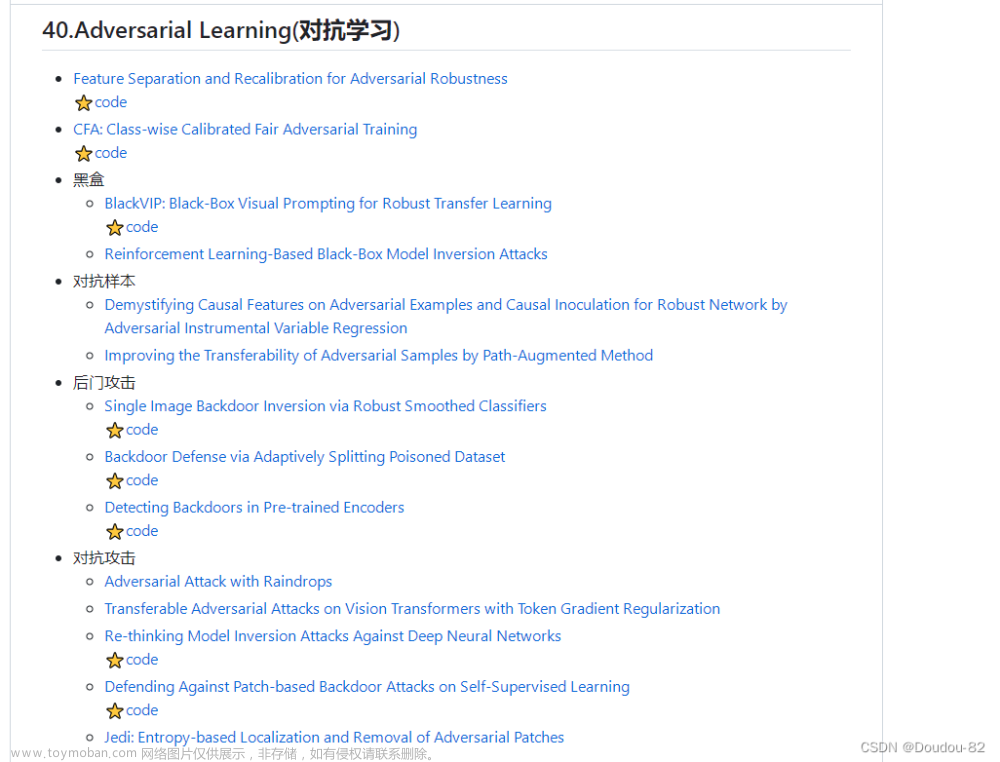论文地址:https://arxiv.org/abs/2203.09123
代码地址:https://github.com/dreamflake/ODI
摘要:本文提出了一种新的方法来生成有针对性的对抗样本,该方法通过使用多种不同的输入图像来生成更加丰富和多样化的图像。具体而言,该方法使用对象-多样化输入(ODI)技术来将同一种类的多幅图像合并成一个输入,并使用迭代FGSM攻击来生成有针对性的对抗样本。实验结果表明,与传统的FGSM攻击相比,采用ODI方法生成的对抗样本在准确率下降的条件下更具有鲁棒性和可迁移性。此外,将ODI方法与其他常见的对抗训练方法(例如TRADES)结合使用可以进一步提高模型的鲁棒性。
该论文提出的关键点包括:
- 提出了一种新的方法——ODI,可以生成更加丰富和多样化的对抗样本。
-
采用ODI方法生成的对抗样本具有更好的鲁棒性和可迁移性,能够有效克服当前对抗攻击存在的一些弱点。
-
该方法可以与其他对抗训练方法结合使用,进一步提高模型的鲁棒性
代打有些语法错误 思路没问题文章来源:https://www.toymoban.com/news/detail-410800.html
import torch
# Define the adversary's loss function L
loss_fn = torch.nn.CrossEntropyLoss()
def generate_adversarial_example(x, y_target, f, L, epsilon, alpha, T, mu, W):
# Initialize the gradient and adversarial example
g = torch.zeros_like(x, requires_grad=True)
x_adv = x.clone().detach()
# Apply the FGSM attack for T iterations
for t in range(T):
# Calculate the gradient using the ODI method
z = ODI(x_adv)
logits = f(z)
loss = L(logits, y_target)
grad, = torch.autograd.grad(loss, z)
g_hat = torch.autograd.grad(z, x_adv, grad_outputs=grad)[0]
# Apply the MI method to combine the current and previous gradients
g_tilde = mu * g + g_hat / torch.norm(g_hat, p=1)
# Apply the TI method to smooth the gradient with a Gaussian kernel
g_smoothed = TI(g_tilde, W)
# Update the adversarial example using the FGSM attack
x_adv = x_adv.detach() - alpha * torch.sign(g_smoothed)
x_adv = torch.max(torch.min(x_adv, x + epsilon), x - epsilon).clamp(0, 1)
# Update the gradient for the next iteration
g = g_smoothed
return x_adv
Note that this code assumes you have already defined the ODI, MI, and
TI functions as separate functions. Also, you’ll need to provide
values for the hyperparameters epsilon, alpha, T, mu, and W, as well
as the target label y_target and the classifier function f.文章来源地址https://www.toymoban.com/news/detail-410800.html
到了这里,关于对抗样本-(CVPR 2022)-通过基于对象多样化输入来提高有针对性对抗样本的可迁移性的文章就介绍完了。如果您还想了解更多内容,请在右上角搜索TOY模板网以前的文章或继续浏览下面的相关文章,希望大家以后多多支持TOY模板网!












